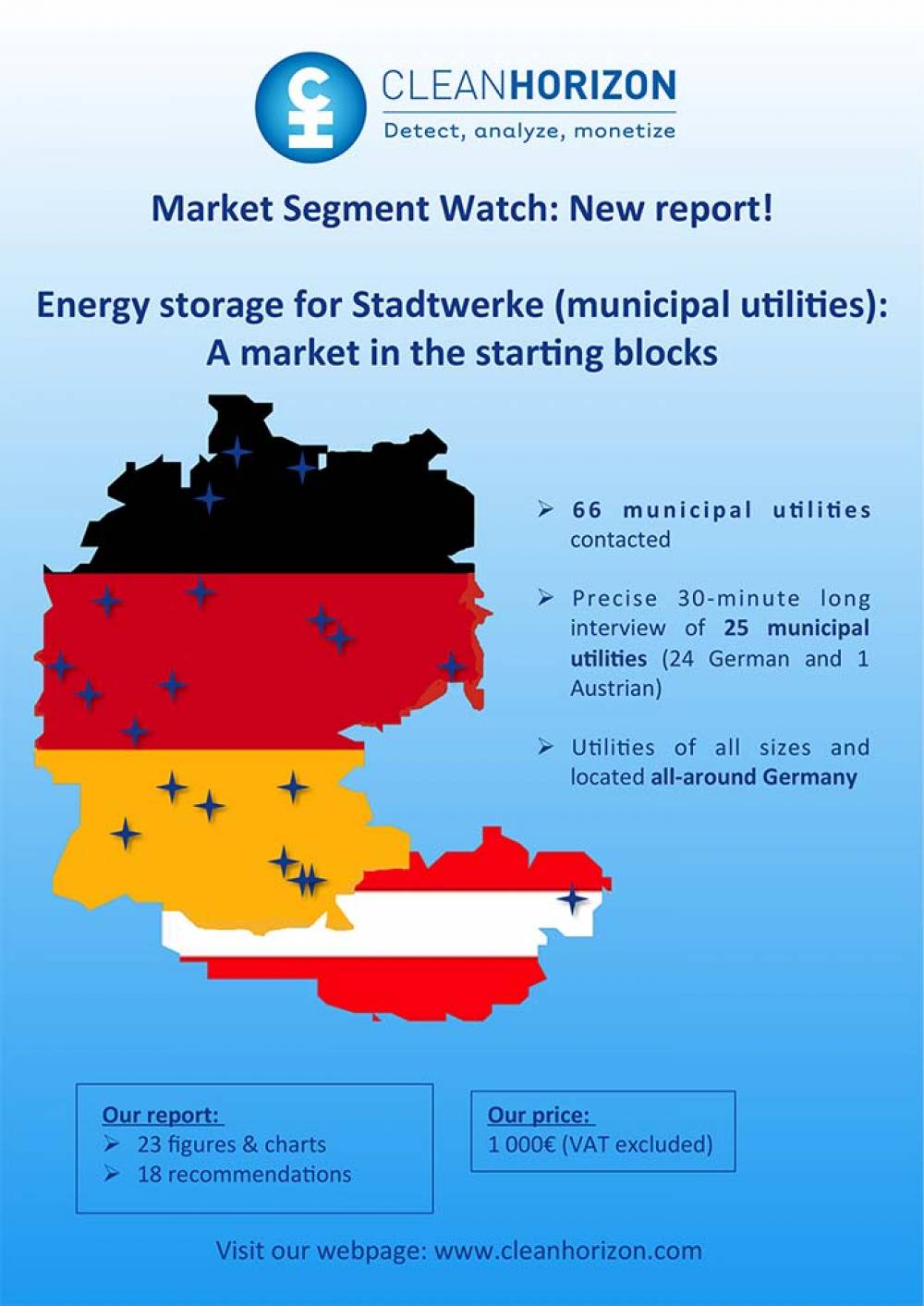Market Segment Watch Germany 2016
This product is not available in this currency
Discover the key business cases for Caribbean Islands such as power purchase agreement for renewables plus storage and the ownership model for storage system.
Description
Table of Contents
Foreword
Introduction
Table of figures
1. MARKET SEGMENT – GERMAN UTILITIES
1.1. The 1998 Energy Industry Act abolished monopolies on the electricity generation
1.2. The new electricity market structure in Germany
1.3. Why is Germany a market for storage manufacturers?
1.4. Different applications for storage for German municipal utilities
1.5. Examples of recent Grid-size battery projects
2. PRESENTATION OF THE STUDY AND CONTEXT
2.1. Structure of the study
2.2. Aim of the study
3. RESULTS OF THE STUDY & RECOMMANDATIONS
3.1. Context – What does the current situation look like for German utilities?
Rate of participation to the study
Current level of implication in storage business
Storage technology considered
Battery technologies considered
Considered applications for storage installations
Technologies chosen or considered depending on application
Strategic priority for municipal utilities
3.2. Current issues with storage technologies
Access to information
Market information
Technical information
Access to business models
Issues with financing
Issues with legal context
Preferred interlocutors concerning energy plans
Conclusion
List of recommendations
List of participating municipal utilities
Table of figures
Figure 1: Energy sources share in gross electricity generation: 2012-2014
Figure 2: Electricity generation in Germany during week 30 2015,
Figure 3: Structure of the German electricity market before and after the Energy Industry Act
Figure 4: Different market tools for different time frames
Figure 5: Structure of ancillary services in Germany
Figure 6: Project view of the 5MW/4MWh battery system in Aachen
Figure 7: Rate of response and interest for the study
Figure 8: Percentage of responding utilities having storage projects
Figure 9:Different storage technologies considered by respondents
Figure 10: Among utilities that considered battery storage, which battery technologies have been considered?
Figure 11: Preferred applications considered for storage devices
Figure 12: Technologies used for home storage
Figure 13: Technologies used for power plant optimization
Figure 14: Technologies used for frequency regulation
Figure 15: Storage technologies used for virtual power plants
Figure 16: German municipal utilities' strategic #1 priority regarding energy topics
Figure 17: Access to information on storage according to German municipal utilities
Figure 18: German municipal utilities' satisfaction towards accessibility of business models
Figure 19: Financing possibilities considered or deployed by German municipal utilities
Figure 20: Is financing an issue for respondents having considered financing already?
Figure 21: How do German utilities consider the regulatory framework regarding storage?
Figure 22: For which applications do utilities not considering regulation as a problem deploy storage?
Figure 23: Who are German municipal utilities' preferred interlocutors when they have special needs on energy or storage projects?
